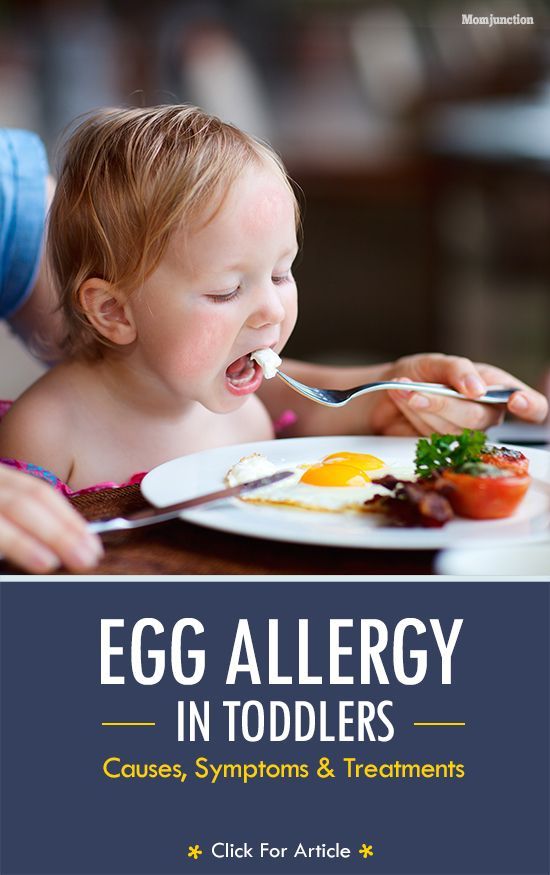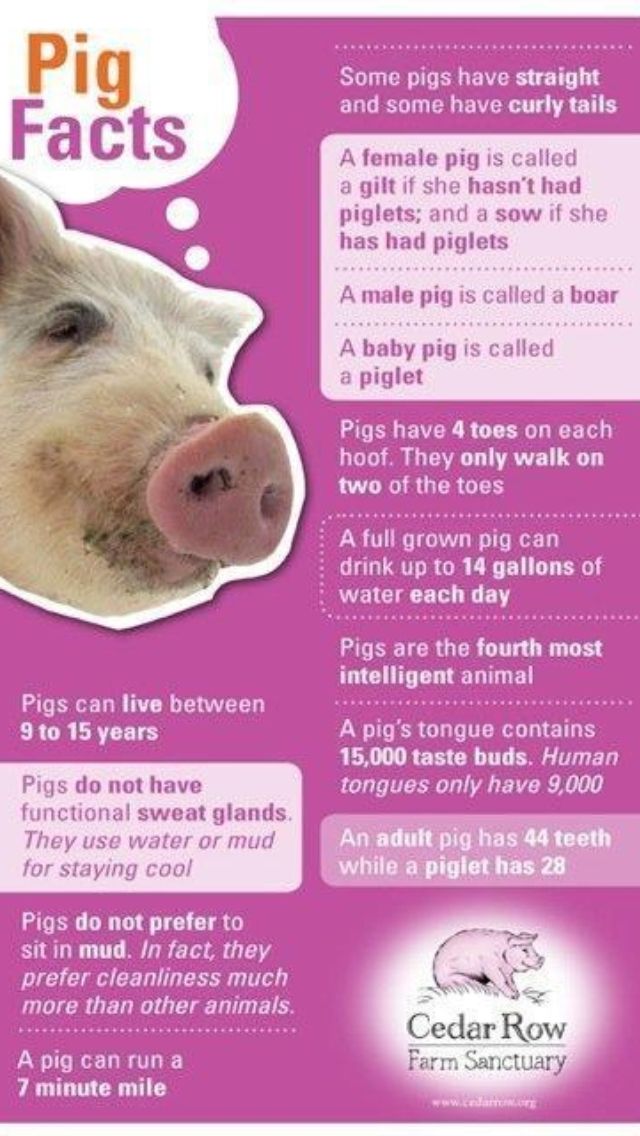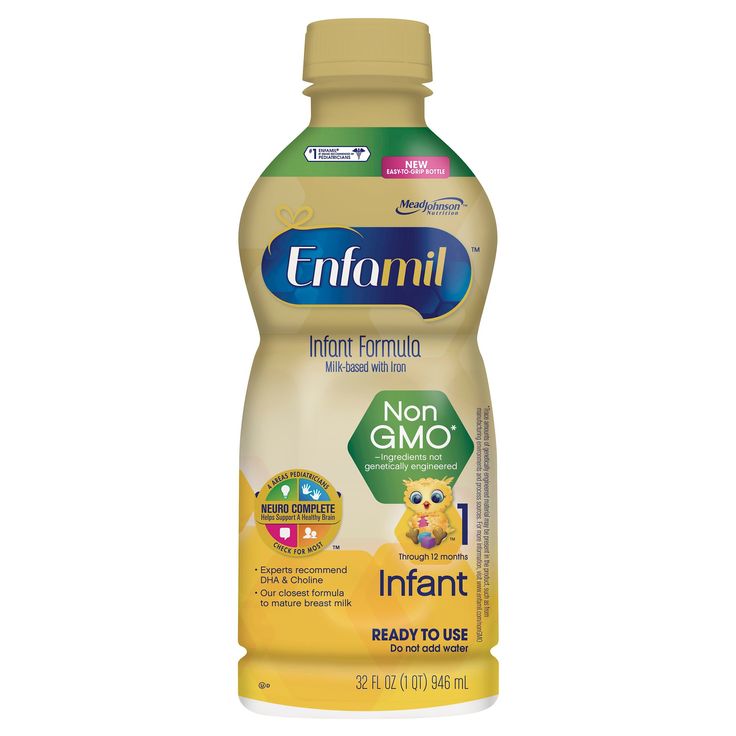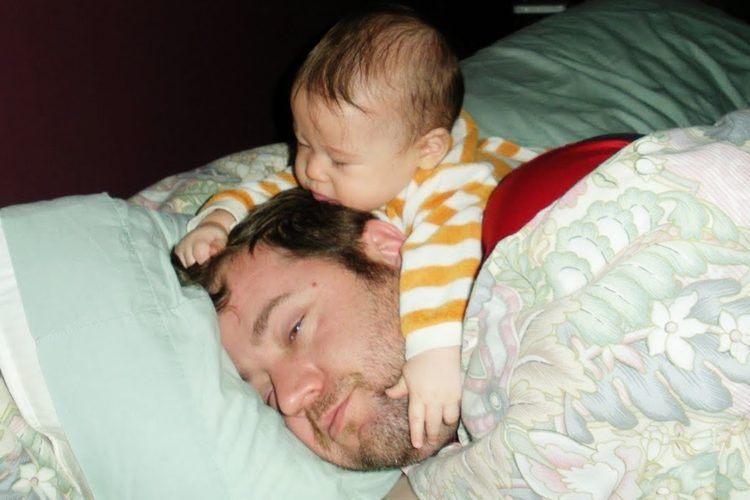What kind of milk do you feed baby goats
Basics of bottle feeding goat kids
Even though I strongly believe that goat kids should be raised by mom, there are times when that simply is not possible. A doe may have more kids than she can feed. A kid may be born too small or weak to be able to nurse. And on rare occasion, a doe may reject one or more kids. So, if you find yourself with a bottle baby, what do you do?
Click to get “How much to feed baby goats?” spreadsheet
Table of Contents
What do you feed a baby goat?
Goat milk is best, and I prefer raw milk because it has all of the antibodies intact. However, if the milk comes from a doe that has CAE, Johne’s, or another infectious disease, then the milk needs to be pasteurized so that the kid does not get infected.
Beyond that, you’ll hear people argue all day long about what to feed. We’ve used milk replacer, and we’ve used whole milk from the store, and we had equally OK results with both.
Without mom’s antibodies in fresh goat milk, the kids will be more likely to have problems with worms and coccidia, which is why some people use medicated milk replacer, which helps prevent coccidiosis.
I really think the reason some kids die on milk replacer is because of human error. If you do not mix it up with the correct amount of water, a kid can wind up with an intestinal blockage. Of course, if someone makes a mistake, it’s a total accident, so they would probably never realize they had done it. So if you do use milk replacer, be extra careful when reading the instructions and mixing it up.
Check out my “Just Kidding and Raising Kids” online course
How much milk do baby goats need?
All kids should get 5% of their body weight in the first six hours and 10% of their body weight in the first 24 hours in COLOSTRUM. Without colostrum, kids will die. When calculating, remember to convert pounds to ounces. If you have a 3-pound Nigerian dwarf kid, that’s 3 X 16 = 48 ounces, which would be 4.8 ounces of milk in the first 24 hours.
It would need to have half that amount in the first six hours, which would be 2.4 ounces. You may have to split that up into two bottles. If the kid wants more, that’s fine. This is just the minimum. If I can get 10% of body weight in colostrum into a kid within the first six hours, I sleep much better.
If the kid wants more, that’s fine. This is just the minimum. If I can get 10% of body weight in colostrum into a kid within the first six hours, I sleep much better.
20% of body weight in this example would be 16 ounces, which is preferred. The above example is only the MINIMUM amounts of milk needed in the first 24 hours!
I gradually increase the amount of milk in the bottle, up to 32 ounces per day for Nigerians. For years I maxed out at 24 ounces, which is what most breeders did back then, but I discovered that the kids are much healthier and grow faster with 32 ounces a day.
Ellen Dorsey of Dill’s A Little Goat Farm in Chelsea, OK, has raised Nubians and Alpines and says, “I’ll give them a 1-liter bottle, which is around 38 ounces, three times a day and then gradually reduce the middle bottle once they start eating hay and grain. So, I max them out at 114 ounces.”
Although most people today max out somewhere around 20% of the kid’s body weight every 24 hours, it is important to watch the kid.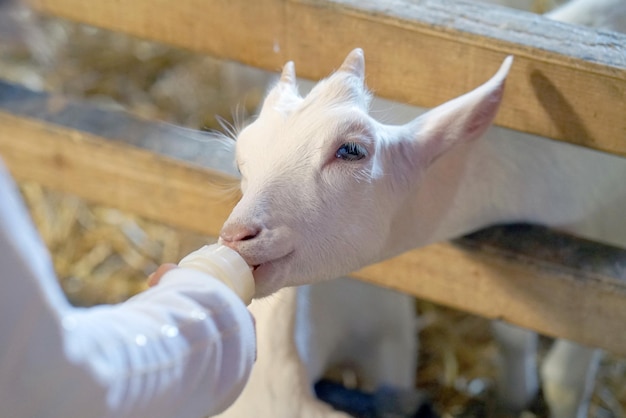 If you have recently increased the amount of milk in a baby goat’s bottle, and it gets diarrhea, go back to the amount of milk you were feeding before the diarrhea started. If the diarrhea was caused by too much milk, it should stop as soon as you cut back on the amount of milk you’re feeding. If it continues, check out this post on diarrhea in goats.
If you have recently increased the amount of milk in a baby goat’s bottle, and it gets diarrhea, go back to the amount of milk you were feeding before the diarrhea started. If the diarrhea was caused by too much milk, it should stop as soon as you cut back on the amount of milk you’re feeding. If it continues, check out this post on diarrhea in goats.
As an Amazon Associate, I earn from qualifying purchases.
How do you get a baby goat started on a bottle?
It is much easier to get kids started on a bottle if you are using a Pritchard teat because you can squeeze the bottle, which causes a few drops to go into the kid’s mouth. This helps them learn that this is how they get milk. And while they are learning, you are getting some milk into them, even if it is a few drops at a time. It’s much easier and faster than using an eye dropper!
Many years ago when we were new, we used human baby bottles, which works okay for a kid that already knows how to take a bottle. However, if the kid has never taken a bottle, that makes it much harder and sometimes impossible, which is why we started using the Pritchard teat at least 15 years ago and never looked back.
However, if the kid has never taken a bottle, that makes it much harder and sometimes impossible, which is why we started using the Pritchard teat at least 15 years ago and never looked back.
Below is a video of two kids getting their first bottle. Keep in mind that it is usually much more challenging to get kids to take a bottle if they have already been nursing from mom. The longer they have been nursing from mom, the longer it usually takes to get them switched to a bottle. It is not unusual for a kid to fight the bottle for several days or even close to a week if it’s been nursing for more than a day or two.
How often do baby goats need to be fed?
Most people feed 4-5 times in 24 hours, and you can usually go 7-8 hours overnight between bottles, so it’s about every 3-4 hours during the day. If a baby goat can’t consume much in the beginning, I may need to give five bottles to get at least 10% body weight into the kid in 24 hours. If the kid is a little piggy, I may be able to do it in four bottles in 24 hours.
Some people try to get kids down to only two bottles as soon as possible, but in my experience, baby goats are more likely to get diarrhea when given too much milk at a single feeding.
Feeding too much milk at one time is also the cause of abomasal bloat, which can cause death if not treated quickly.
For the first two to four weeks, we give bottles at about 7 a.m., noon, 5 p.m., and 10 p.m. After one month, we do three bottles a day, which would be 7 a.m., 3 p.m, and 10 p.m. After two months, we do two bottles a day — one in the morning and one in the evening.
How long should baby goats get a bottle?
Kids need milk for a minimum of two months, or in the case of my Nigerian dwarf kids, until they weigh at least 20 pounds, which is about 1/4 to 1/3 of their adult weight. I cringe when I hear someone say that they wean standard size goats that weigh only 20 pounds because obviously they need to be even bigger before weaning. And age is simply not a good indication of when to stop giving milk.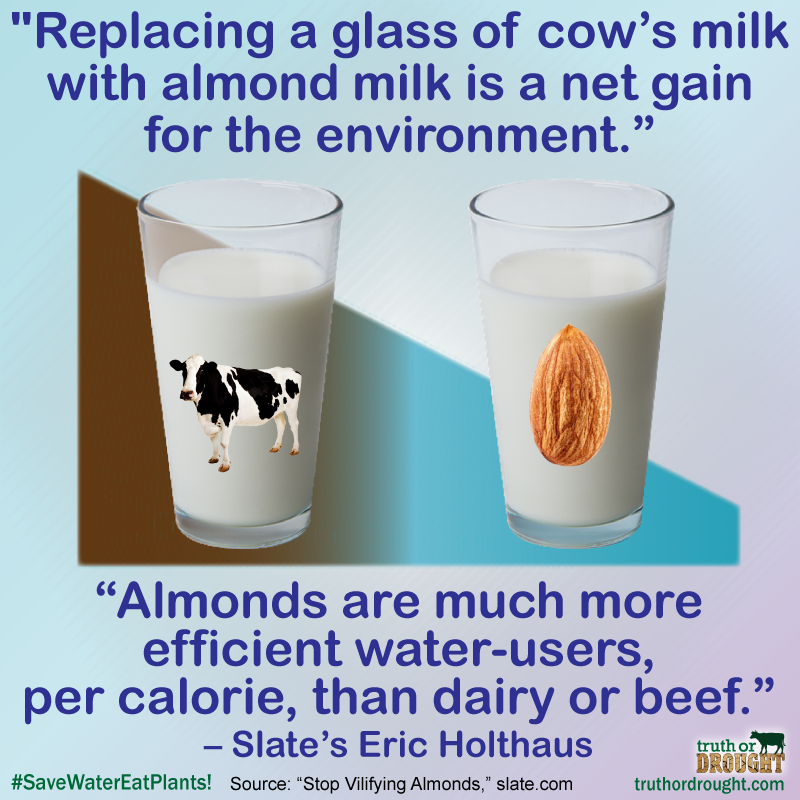 Weight is much more important. After all, the goal of feeding milk to kids is so they can grow big and healthy.
Weight is much more important. After all, the goal of feeding milk to kids is so they can grow big and healthy.
Between keeping copious records of feeding and weight gain on our own kids, I have also received way too many emails and messages from people who have Nigerian dwarf kids that are several months old and weigh only 15 pounds and are suffering from chronic coccidiosis and diarrhea. These kids are obviously malnourished and have a very poor immune response due to not getting enough milk early in life.
In the early years, we used to bottle feed for three to four months. But since we’ve learned that mama’s milk makes them healthier, and they grow faster, we now bottle feed for five or six months. People who wean earlier are usually providing medicated feed to prevent coccidiosis. But that doesn’t always work either.
Where should bottle babies live?
Of course, it is tempting to keep bottle babies in the house with you. They are so adorable and cuddly! And it’s easier than going out to the barn to give a bottle at night. But having a kid in the house creates so many problems!
But having a kid in the house creates so many problems!
Sure, it’s cute and fun until the kid is running around and eating your mail and chewing up your extension cords and dancing on top of your CD player. (Yep, really happened.)
The worst part, though, is that they don’t know they’re a goat, and eventually you will have to put them outside, and it will be a very sad day as you listen to that kid screaming for hours. So, if they are a normal, healthy kid, I now make them stay with the other goats.
If they are weak or having trouble maintaining their body temperature, we will keep them in the house initially, but we move them to the barn with other goats as soon as it’s safe for them, which is usually within one or two days.
If we have more than one bottle baby, we will have a bottle baby pen in the kidding barn, so they can all stay together. But if there’s only one, we try to keep it with its mother and siblings, if possible. Because goats are herd animals, they should not be alone, and it’s best for them to realize that other goats are their herd, rather than humans.
Enroll in my “Just Kidding and Raising Kids” course
Guide to Pregnancy, Kidding, and Newborn Care
For more information on how to feed kids as they grow, check out this article on What Do Goats Eat? It depends?
Bottle Feeding Baby Goats - Backyard Goats
Reading Time: 5 minutes
Once your kids arrive, you will need to decide if they will be dam-raised or if you will be bottle-feeding baby goats. There are reasons you might choose to bottle feed from promoting friendliness to managing the dam’s udder. Or you may be forced to bottle-feed because for one reason or another the dam can’t or won’t let the kids nurse or a kid is too weak or compromised to nurse. Whatever the reason, if you are planning on bottle-feeding, you likely have many questions including:
- What kind of milk to feed baby goats?
- How to get a baby goat to bottle feed?
- How much milk to feed a baby goat?
- How long to bottle feed a baby goat?
What Kind of Milk to Feed Baby Goats:
When bottle-feeding baby goats, the very first milk they must receive is colostrum.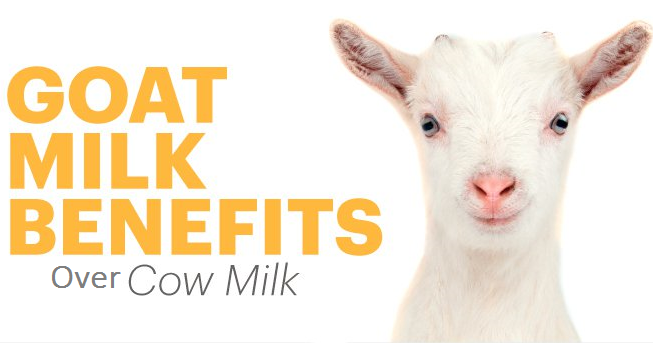 Ideally, the dam will be producing enough colostrum that you can express her own into a bottle and immediately feed it to the kids. But if her fresh colostrum is not available for some reason, your other choices are to feed fresh colostrum from another doe that has kidded at the same time, feed frozen colostrum that you saved from a previous kidding, or feed kid colostrum replacer. For this last choice, it is important to be sure it’s kid colostrum replacer and not calf or lamb replacer as the nutrient needs are different for different species. It is also important to be sure it’s colostrum replacer and not milk replacer. Newborn kids absolutely must get colostrum in the first 24-48 hours of life or their chances of survival are low. Do not substitute any type of homemade replacer at this stage and don’t try to get by with regular whole milk.
Ideally, the dam will be producing enough colostrum that you can express her own into a bottle and immediately feed it to the kids. But if her fresh colostrum is not available for some reason, your other choices are to feed fresh colostrum from another doe that has kidded at the same time, feed frozen colostrum that you saved from a previous kidding, or feed kid colostrum replacer. For this last choice, it is important to be sure it’s kid colostrum replacer and not calf or lamb replacer as the nutrient needs are different for different species. It is also important to be sure it’s colostrum replacer and not milk replacer. Newborn kids absolutely must get colostrum in the first 24-48 hours of life or their chances of survival are low. Do not substitute any type of homemade replacer at this stage and don’t try to get by with regular whole milk.
Once you get the newborn kid through the first 24-48 hours, then you can switch to milk. Ideally, you will have fresh goat milk available as this is best. Many goat owners who choose to bottle-feed will milk the dam and then immediately transfer the milk to bottles and feed it to the babies. Other goat owners prefer to heat-treat the milk before bottle-feeding baby goats in order to eliminate the risk of potentially passing CAE or other diseases from the dam to the baby. I, myself, do my CAE tests while my does are pregnant so that I know they are negative and then I feed the mother’s milk to the babies raw, which feels more natural to me and I believe it contains more of the beneficial antibodies than heat-treated milk does. But if you do choose to heat-treat, remember that colostrum cannot actually be pasteurized because it will curdle, so it must just be gently heated to 135 degrees F and held at that temperature for one hour. Regular milk can be pasteurized at 161 degrees F for 30 seconds.
Ideally, you will have fresh goat milk available as this is best. Many goat owners who choose to bottle-feed will milk the dam and then immediately transfer the milk to bottles and feed it to the babies. Other goat owners prefer to heat-treat the milk before bottle-feeding baby goats in order to eliminate the risk of potentially passing CAE or other diseases from the dam to the baby. I, myself, do my CAE tests while my does are pregnant so that I know they are negative and then I feed the mother’s milk to the babies raw, which feels more natural to me and I believe it contains more of the beneficial antibodies than heat-treated milk does. But if you do choose to heat-treat, remember that colostrum cannot actually be pasteurized because it will curdle, so it must just be gently heated to 135 degrees F and held at that temperature for one hour. Regular milk can be pasteurized at 161 degrees F for 30 seconds.
If you don’t have fresh goat milk for bottle-feeding baby goats, then your choices are goat milk replacer or another species of milk. I have seen goat milk replacer recipes but the advice I get from my veterinarian and goat mentors is that whole cow milk from the grocery store is more adequate and appropriate in the event that I don’t have, or don’t want to use, powdered replacers.
I have seen goat milk replacer recipes but the advice I get from my veterinarian and goat mentors is that whole cow milk from the grocery store is more adequate and appropriate in the event that I don’t have, or don’t want to use, powdered replacers.
If your newborn is healthy enough to have a strong sucking reflex, getting it to take a bottle will be relatively simple. I like to use the little red “Pritchard” nipples for newborns because they are smaller and easier for them to suck. Don’t forget to snip the tip of the nipple as it doesn’t come with a hole in it! Hold the bottle at an angle so that the milk is flowing downward, open the baby’s mouth with your fingers, and stick the nipple inside. I find it helpful to put gentle pressure on the top and bottom of the muzzle to help the baby hold the bottle in its mouth at first. A strong kid will generally be hungry and start sucking enthusiastically.
Bottle-feeding a baby goat.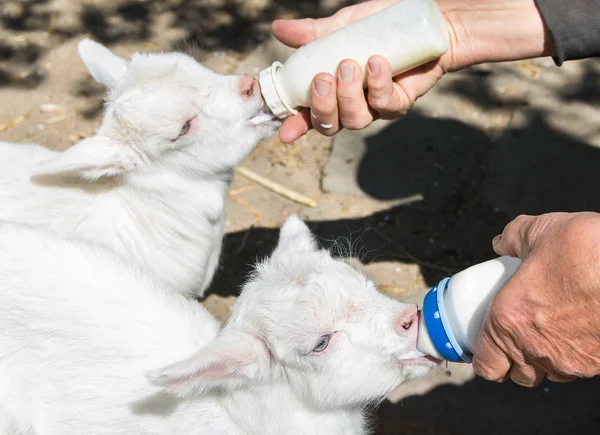 Photo credit: Kate Johnson.
Photo credit: Kate Johnson.If the baby is too weak to suck, you may need to feed a few drops at a time through a medicine dropper (be careful not to put too much on its tongue or in the side of its cheek at once or it could go down the wrong tube and into the lungs). Or you may need to tube-feed the baby. I’ve also had babies that just needed to wake up a bit in order to get the sucking response going, and I find that using a supplement like “Nutri-Drench” or some Caro syrup or even coffee, rubbed on their gums, is often enough to give them a little energy boost and get them eating.
How Much to Feed a Baby Goat:How much your babies will need depends on whether they are full-sized breeds or miniature breeds, and also on how old they are. In general, try to feed three to four ounces per five pounds of weight per feeding. At first, you may be feeding every three to four hours, and then after a few days, you’ll spread this out to four feedings a day. You can drop that back to two or three feedings a day at about three weeks of age, and then down to twice a day by six to eight weeks.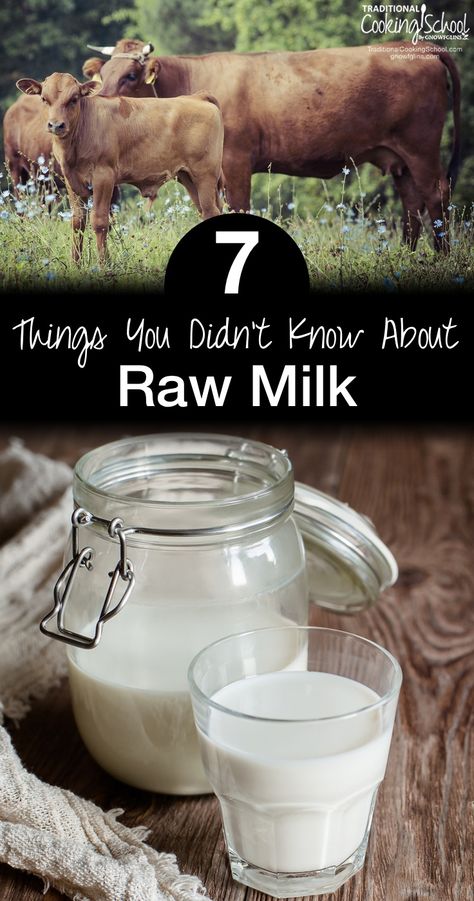 For the last month, you can feed once a day as they should be eating some hay and grain by then, if not sooner.
For the last month, you can feed once a day as they should be eating some hay and grain by then, if not sooner.
Here are two useful charts to use as a starting point. You may need to modify the schedule and number of feedings per day based on your own schedule and time constraints, but this is a good place to begin:
Bottle-Feeding Nubian Goats (or other full-sized breeds):| Age | Ounces per Feeding | Frequency |
| 0-2 Days | 3-6 ounces | Every 3-4 hours |
| 3 Days to 3 Weeks | 6-10 ounces | Four times a day |
| 3 to 6 Weeks | 12-16 ounces | Three times a day |
| 6 to 10 weeks | 16 ounces | Twice a day |
| 10 to 12 weeks | 16 ounces | Once a day |
| Age | Ounces per Feeding | Frequency |
| 0-2 Days | 2-4 ounces | Every 3-4 hours |
| 3 Days to 3 Weeks | 6-8 ounces | Four times a day |
| 3 to 8 Weeks | 12 ounces | Twice a day |
| 8-12 weeks | 12 ounces | Once a day |
As a general rule of thumb, when I’ve decided on bottle-feeding baby goats, I try to feed doelings for at least three months and bucklings or wethers for at least two months. Sometimes I go longer if I have extra milk, but this seems to get them off to a good start and by two to three months they are eating grass, hay, and even some grain, so their need for milk is greatly reduced.
Sometimes I go longer if I have extra milk, but this seems to get them off to a good start and by two to three months they are eating grass, hay, and even some grain, so their need for milk is greatly reduced.
Bottle-feeding baby goats is a time commitment, but it’s also a fun way to bond with your babies and make them oh so friendly!
References
https://www.caprinesupply.com/raising-kids-on-pasteurized-milk
Feeding kids from the first days of life: diet and norms
- Are you here:
- Own farm
- goats
From the first days of life, a newborn kid needs the care of his mother and his owner. Feeding kids is an important process that requires breeders to be responsible and know the basics. After all, the further health and performance of babies depends on proper care and diet. nine0011
After all, the further health and performance of babies depends on proper care and diet. nine0011
Contents:
- Preparing for the first feeding
- Methods of feeding
- Under the uterus
- Without queen
- Diet and feeding schedule during the milk period
Preparing for the first feeding
Most goats give birth naturally and without complications. After giving birth, the female's umbilical cord is cut, the udder is washed, and first the first streams of colostrum, which contain bacteria, are expressed, and then it is put into a clean bowl. nine0011
A newborn kid is wiped with a clean cloth, the mouth and nose are freed from mucus. It is important that it does not get into the lungs of the baby, as it can infect and cause inflammation. In a newborn baby, the skin is not able to absorb or give off heat, therefore, in order to avoid hypothermia, especially if it is winter, the kid must be wrapped in a warm blanket and brought into the house.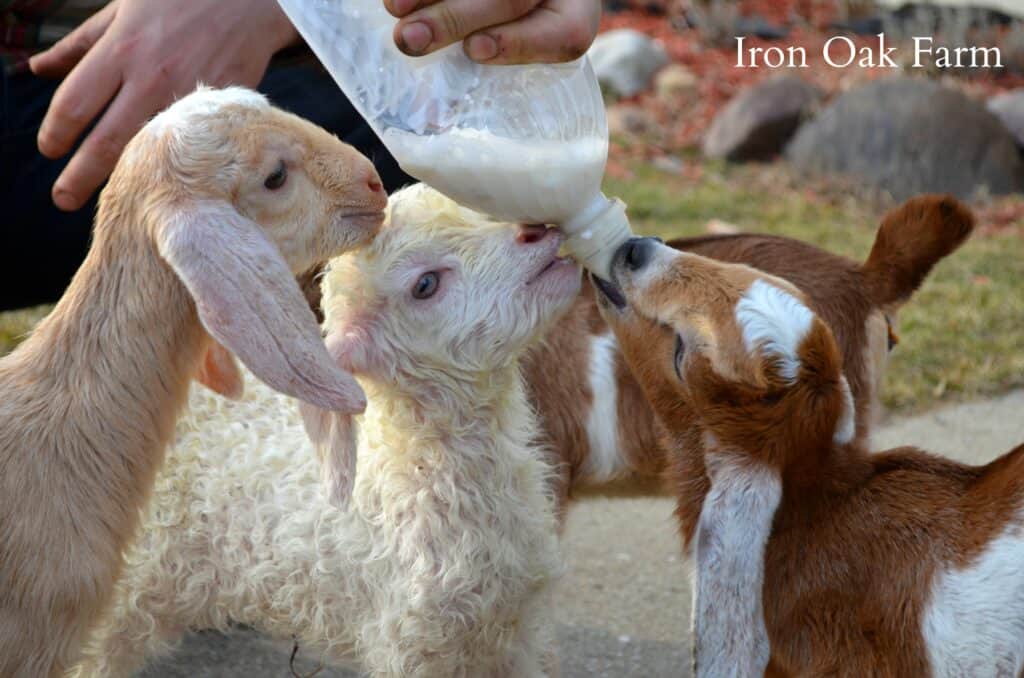
From birth and first feeding, no more than 1 hour should pass: the protective functions of the baby's immunity are weakened, and the body is not able to resist bacteria and dangerous viruses. In order for the immune system to start actively producing antibodies that fight harmful microorganisms, it is necessary to provide the kid with access to the mother's colostrum as soon as possible. This fluid contains all the nutrients necessary for proper development. nine0011
Methods of feeding
Depending on the direction of the female's productivity, feeding goats in goat breeding can be carried out in two ways: rearing on suction under the uterus and feeding without a uterus.
Under the uterus
Feeding kids under the uterus is the most optimal and convenient way and is practiced only with goats of low milk production. The cubs stay with their mother until they reach 3-4 months of age and suck the udder provided to them in free access as many times a day as they like.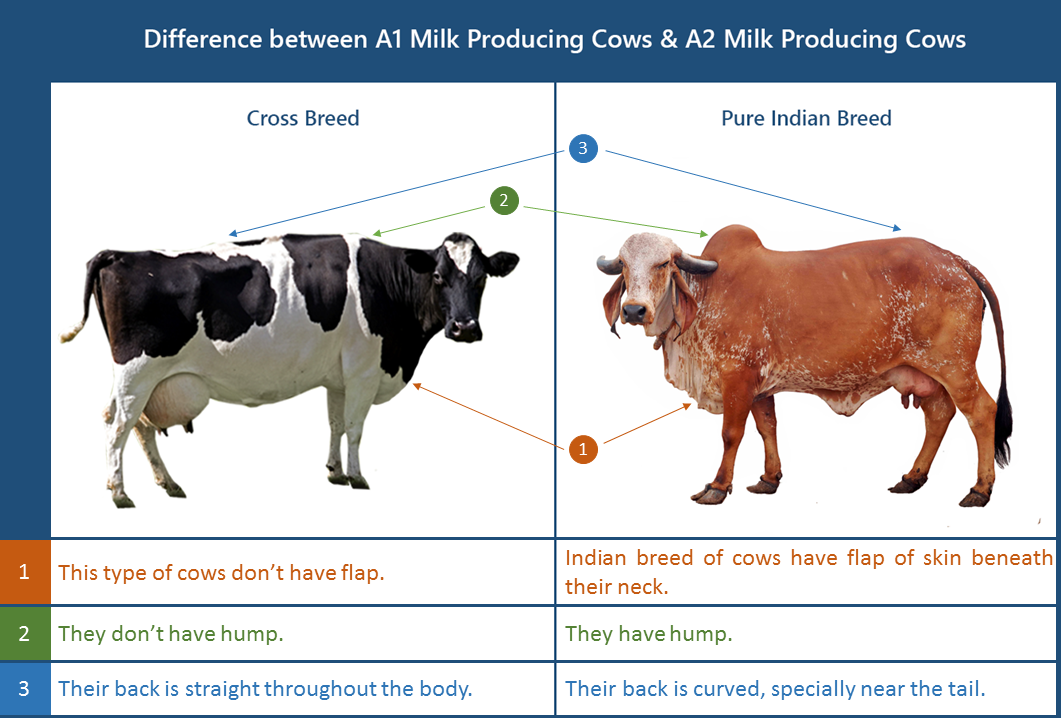 nine0011
nine0011
When growing kids naturally, it is necessary to take care of the mammary glands of a goat: although the kids feed on their own, they do not suck out all the colostrum, especially in the first days. The secretions accumulate and can lead to the development of mastitis. To prevent this process, the female's udder is checked after feeding, and in the presence of colostrum or milk residues, they are milked.
After 3 weeks, the diet of babies begins to feed: 5 g of salt, the same amount of bone meal or chalk. At 3 months, this norm increases by 2 times. nine0011
As they grow older, the amount of additional feeding becomes larger and the goats begin to be given concentrated feed: a mixture of bran, oats and sunflower meal.
Upon reaching 3-4 months of age, within 7-10 days, the kids are weaned from their mother (it is allowed to let the kids go to the uterus every other day). After natural feeding, it may be difficult to transfer to artificial nutrition. The first day the kids endure it very painfully: they worry, bleat and refuse to drink milk mixtures. nine0011
nine0011
After weaning from a goat, the diet should not be changed abruptly: milk is replaced with oatmeal, mixtures and mash of bran and wheat flour. The transition should be gradual, and after a week the kids should be ready to feed on their own.
Advantages
The scheme of feeding kids under the uterus has many advantages and advantages: nine0004
- Thanks to the beneficial substances in goat milk, kids have a strong immune system and are less susceptible to diseases;
- development and mass gain is faster;
- observing the behavior of the mother, the goats get accustomed to hay and concentrates faster;
- The breastfeeding process is simple and requires minimal effort on the part of breeders.
Disadvantages
The method has the following disadvantages:
- kids born in summer or late autumn completely suck out the goat when pasture;
- damage by babies to non-working (rudimentary) nipples, which causes their swelling, soreness and anxiety of the mother.
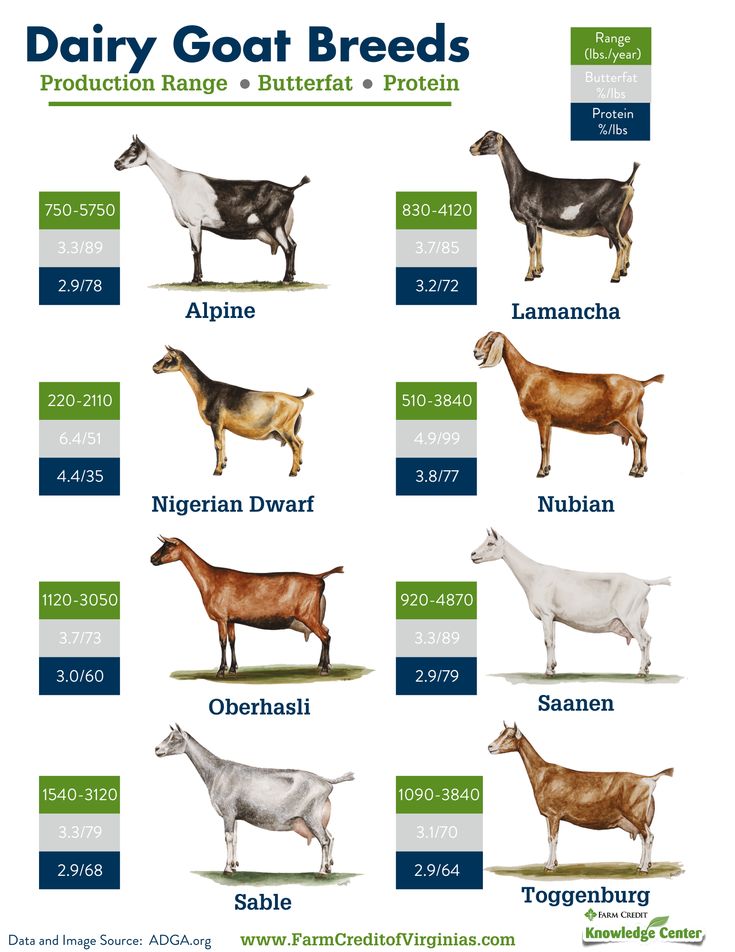
Queenless
This method of feeding is more troublesome and requires constant monitoring and care by the farmer. It is used in the breeding of highly productive dairy goats. nine0011
After the baby goat is born, it is immediately removed from its mother and fed with warm milk from a bottle with a rubber nipple or from a cup. The optimum temperature for warmed milk is around 38 ºC.
Even with this method of feeding, goat colostrum must always be fed to the kids. It cleanses the stomach from the primary feces and contains in its composition all the useful substances necessary for the further growth of the kid. Babies, in whose diet mother's colostrum is introduced from the first days, are less susceptible to diseases and infections. nine0011
A newborn baby goat should immediately be taught to drink milk from a cup. All utensils must be sterile to prevent contamination by germs.
For artificial feeding, when the mother is absent, for example due to death or if she has mastitis, goat's milk substitutes are used instead of goat's milk. The composition of the mixture includes dry skimmed cow's milk, vitamin substances, fats of vegetable and animal origin, useful elements, emulsifiers and flavorings. nine0011
The composition of the mixture includes dry skimmed cow's milk, vitamin substances, fats of vegetable and animal origin, useful elements, emulsifiers and flavorings. nine0011
Advantages
Feeding without a queen, like natural feeding, has its advantages:
- from the first days of life of goats, the farmer can independently control the process of feeding and their diet;
- obtaining high milk yield from a goat for dairy productivity.
Disadvantages
The method of artificial feeding has significant negative aspects:
- kids weaned from their mother at an early age are more susceptible to diseases and infections; nine0004
- if breeders do not provide proper care for offspring, then the development of kids is slower and some of them may have a weak immune system and sickness;
- the method of rearing young animals without a queen is more costly and complex, requires financial investment and considerable effort on the part of the farmer.

Diet and feeding scheme during the milk period
Within a month after birth, it is recommended to feed the offspring first 5, and then 4 times a day every 4 hours in small portions, gradually increasing the amount of food. nine0011
Up to 10 days of age, only fresh goat colostrum is included in the diet of kids (the first 3-4 days), and then milk - first 200 g per feeding with a gradual increase to 300 g. After 10 days, they begin to give freshly boiled and strained liquid oatmeal . You can add it to milk for 1 tbsp. spoon, increasing its amount every day.
At the age of 2 weeks, goats are fed with roughage (hay) and green grass. From 20-30 days of age, they begin to accustom to concentrates, starting from 20-30 grams. nine0011
In the summer, young animals at the age of 1 month are recommended to walk on the pasture.
From the 31st day of birth, finely chopped root vegetables should be present in the diet of babies.
As a top dressing from minerals and instead of green grass, for the prevention of vitamin deficiency, babies are given fresh needles, fish oil 4–8 g per day, table salt and chalk with bone meal.
At the age of 5 months, the grown offspring are transferred to keeping in the stall. In order for the body to receive all the substances indispensable for growth and development, the diet includes 1.5 kg of hay, 300 g of concentrates and about 1 kg of root crops. Feeding babies according to this nutritional scheme will provide them with a monthly weight gain of up to 4 kg. nine0011
Regardless of the method of feeding, clean and not cold water in large volumes should always be freely available to the goats.
If you provide kids with proper care and feeding, balance their diet, then with any of the methods of nutrition, they will grow up healthy and prolific. It is only necessary to show attention and surround them with care, and they will definitely thank you in the future with delicious milk or fresh meat products.
More to read
Feeding goats at home: norms and diet
Goat feeders: requirements, DIY
How to milk and milk a goat: tips and description
Goat milking machine: requirements , DIY
Latest comments
nine0011Proper feeding of kids is a guarantee of high milk yields in the future. -
The first feeding of a kid, video. How many times a day to feed the goats? What to feed monthly goats? Proper feeding of kids is the key to high milk yields in the future.
The high productivity of goats depends on how the future nurse was raised . Depends on WHAT she received and in what quantities.
This is especially important in the first three months, starting from the very first feeding . Keeping kids under a goat makes it impossible to control the amount of milk consumed if there are two or three kids under the goat.
Keeping kids under a goat makes it impossible to control the amount of milk consumed if there are two or three kids under the goat.
Full control can only be obtained by bowl feeding the kids. We feed our kids from a bowl and are very pleased with the results. Kids grow strong, have a large belly and a strong digestive system capable of processing large amounts of feed, from which, as you know, milk is obtained. The more feed units an animal can process per day, the more daily milk yield will be. nine0011
Feeding kids from the first days of life.
The basis of our method is the abundant feeding of the kid in the first months of life.
Goat lambing. Birth of goats. Afterbirth." HERE.
In all the literature devoted to goat breeding, on the first day of life, the daily norm of milk for a goat is 500g.
Our goats drank up to 600 g of milk at the first dose (not colostrum, because the goat could not be started before lambing). nine0011
nine0011
Per day (DURING THE FIRST DAY ) a kid is able to drink up to 1900 g of milk . In this case, their intestines are quickly freed from the original feces (meconium) and the body receives a starting set for intensive work . This is a very important point.
By the age of 30, the books recommend bringing the daily milk intake up to 1200-1400 g. Our monthly kids drink 2500-2600 g of pure goat milk per day.
How to feed newborn kids?
I would like to focus on the soldering technique. "How to milk a goat correctly?" - HERE.
Milk is offered only from a bowl. This allows you to control your milk intake at each feeding. Milk is poured into the bowl so much that it remains after the goat itself moves away from the dishes. Not a single kid ever had diarrhea, even though he fell off the bowl, like a ball. For the first two or three feedings, care must be taken that the kid's nose does not sink deep into the milk, and he does not capture it with his nostrils. If this happens, then after two or three sneezes, the baby will then figure out what's what. nine0011
If this happens, then after two or three sneezes, the baby will then figure out what's what. nine0011
First, bring the bowl to the muzzle and lightly press the goat's head between the ears with your finger. In no case should you put him on his knees, as is sometimes recommended in the literature, and poke his nose into a bowl. The kid will perceive all this as violence against himself and start a war with you. Then he will no longer have time for food, and he will remember this fear for a long time.
How many times a day to feed the kids?
About the desoldering mode. The first two days the kid eats 6 times a day strictly after 4 hours. nine0144 Milk should always be warmed up to 40 degrees.
Feeding a kid from a bowl.On the third day, you can switch to five meals a day. The goat itself prompts such a regime, refusing the sixth feeding, or the last two or three feedings will drink sluggishly.
On the fifth or sixth day, his figure, after each feeding, will look like the letter "F". An abdomen will appear, which undernourished kids do not have.
An abdomen will appear, which undernourished kids do not have.
On the 7-8th day, you can switch to a four-time feeding. Intervals between feedings must be equal. This is important because the goat should come to the next feeding hungry. He pounces on a bowl of warm milk and drinks heavily. Coming to his senses, he raises his head and looks as if he is saying: “What have I done? I ate again!"
When fed traditionally or kept under a goat, kids grow flat like a flounder. They have the sporty appearance of running animals. Dairy animals must have different dimensions. nine0011 It happens that a goat runs up to a bowl and refuses to drink milk. The main reason for here lies in the underheated milk. Babies are very sensitive to this. “Shed for keeping goats. Goat shed floors. Feeders for goats” — HERE When a goatling drinks milk, it can (and should) be lightly stroked on its back. This procedure increases the amount of milk drunk. Apparently, he thinks that they want to drag him away from the bowl. After the kid has drunk, he needs to wipe his muzzle with a dry, clean rag or soft hay. After two or three “washes”, the kid will stand and wait to be rubbed on his face and said a few affectionate words. Everyone loves affection. nine0011 Another point: the literature recommends introducing decoctions into the diet from 10 days of age. On the third-fourth day of life, the kid must be offered a rotten stump, gnawed by wood-boring beetles. It will happily eat softwood and brown woodworm excrement. Thus, the kid populates its gastrointestinal tract with microflora, which, in the future, will process cellulose. Goats belong to trees and shrubs and their diet must contain cellulose (bark or twigs). From 10-11 days old, there should be good soft-leaved hay in the feeder. The kid, at first, does not eat it, but only savores it, licking various kinds of fungi and yeast from the surface of the leaves, which will also, in the future, take part in its digestion. On a walk, a kid is very interested in moss growing near the ground on trunks of aspen, young oak, blueberry trunks. And in the literature, instead, it is proposed to make attacks with talkers and decoctions of cereals on the still unformed digestive system of a kid. This is fraught! The main food until the age of one and a half months should be pure milk. All the rest - variants from inferiority by the presence of milk, from ignorance , or from the greed of the owner, who prefers to drink this milk himself, or sell it. The average weight of a 4-6 month old kid in the literature is 15-23 kg. The maximum weight gain in goats is in the first month of life. It is important not to miss this time and in no case limit them in nutrition . Then, with each subsequent month, the weight gain is slower, although the kids continue to consume goat milk in plenty. That is why it is important not to restrict goats in milk during this initial period of their life, otherwise then they will never reach high levels in terms of weight and milk yield. They will not be able to consume large amounts of feed as their digestive system will be less developed than in an animal that has been fed ad libitum pure milk from the first hours of life until the age of six months. nine0011 Our feeding technology, at first glance, seems expensive and troublesome. Your pets will differ in all respects for the better from goats raised in a different way. You will look at the flattened neighbor goats with tears in your eyes, thinking about how she was underfed in childhood, trying to deceive the growing body with all kinds of talkers, knocking down the baby’s digestion and resorting to medicines to save her from diarrhea. nine0011 It must be borne in mind that in order to raise one kid using our method, you need to have two nurse goats in the farmstead, if your one goat is not able to fully provide the necessary amount of milk. A three-month-old goat is able to drink up to seven liters of milk per day, but at this age three liters will be enough for her to eat adult food, which she is already able to process in large quantities. What to feed a goat in winter? - HERE . nine0011 “The goat's gum has disappeared - the scar has stopped. Goats fed from childhood ad libitum from a bowl are ready to cover after 4-5 months. And not in a year and a half, as almost all literature recommends. This late covering is due to the slow growth of due to the lack of normal food provided by nature , i.e. pure mother's milk. Now the representatives of the human race are all completely fed with mixtures that ruin the health of our future generations. But this is another topic and not for us to decide. Everything has been decided for us for a long time ... We covered our kids when they were four or five months old. At the time of covering, the goats weigh 40-42 kg. At 9 months they became mothers and a month after lambing (10 months old) we milked 4.2 liters of milk per day from such a goat. One of our goats had her first hunt at 97 days old. This suggests that good feeding reduces the period of idle (unprofitable) maintenance. Usually we skip the first hunt and cover the second. I think that goats grown according to our method should be covered without delay, because. in them, all the energy produced by large amounts of feed can go into obesity. The ovaries can fail and the fertility of such an individual will be very problematic. Now some comparative arithmetic. Sosnowski's method (ad libitum, pure milk from a bowl). nine0144 In three months, our goat drinks, on average, 350-370 liters of pure goat milk. Covered at 5 months. Starts milking at 9-10 months of age. After the first lambing, her maximum daily milk yield is, on average, 4 liters. Brings healthy full-fledged kids. After 4-5 lambing, our goat reaches a daily milk yield of 6-7 liters.
Video. Baby goat's first feeding. 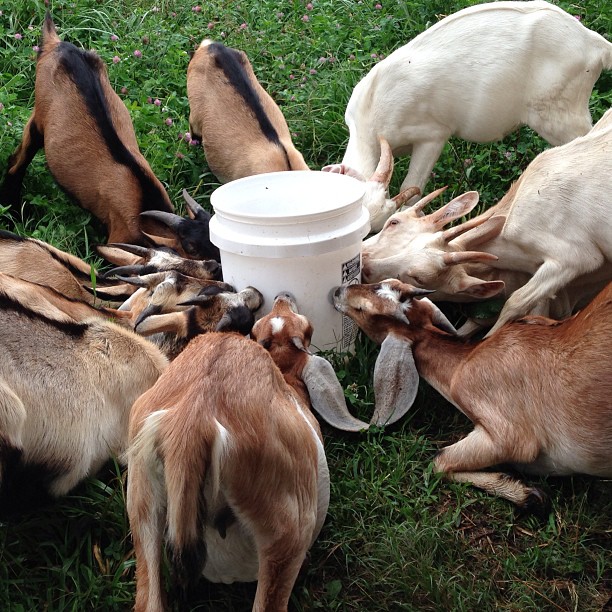 It is necessary to warm up the milk and offer the kid again. I noticed that milk heated to 42-43 degrees, the kids drink faster and more than milk with a temperature of 40 degrees. In the cold season, if the kids are drinking in an unheated barn, the bowl of milk should be placed in another larger container filled with warm water. In this case, the milk will stay warm longer. nine0011
It is necessary to warm up the milk and offer the kid again. I noticed that milk heated to 42-43 degrees, the kids drink faster and more than milk with a temperature of 40 degrees. In the cold season, if the kids are drinking in an unheated barn, the bowl of milk should be placed in another larger container filled with warm water. In this case, the milk will stay warm longer. nine0011 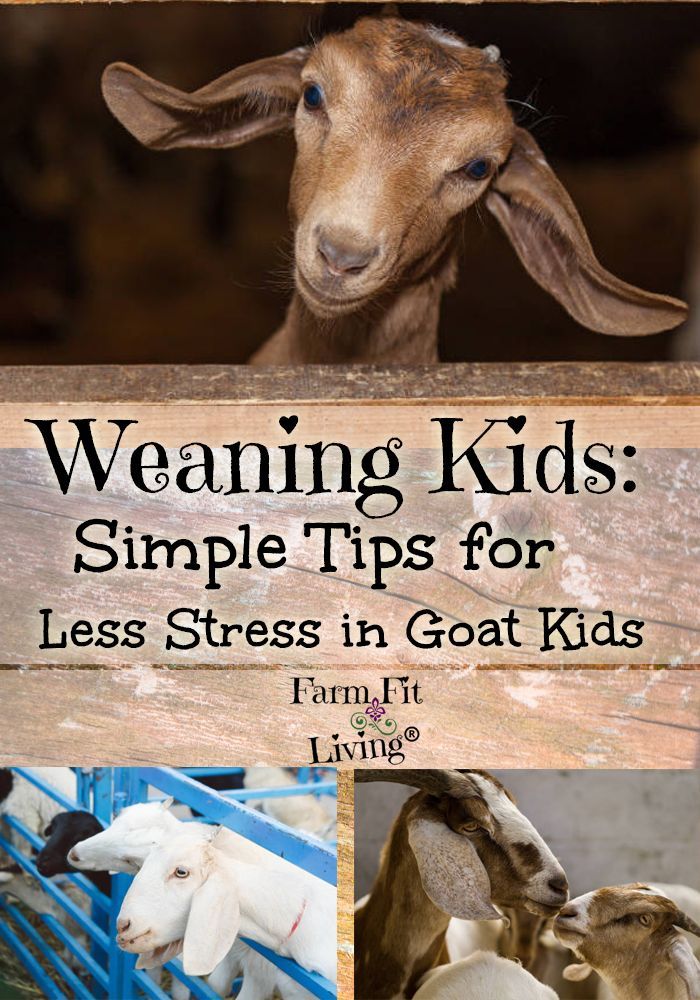 We never do this, because cereal or flour broth is already “adult” food, and the digestive system of a 10-day-old kid is not yet able to digest it. Most often, after such food, goats develop diarrhea , as a result of which growth and development slow down. And this is not the worst option.
We never do this, because cereal or flour broth is already “adult” food, and the digestive system of a 10-day-old kid is not yet able to digest it. Most often, after such food, goats develop diarrhea , as a result of which growth and development slow down. And this is not the worst option.
When to start giving hay to a kid?  At first, he spits out the licked leaves, and after 15-17 days he can already swallow some of the leaves he likes. After the 20th day of life, you can already see him belching. This suggests that the abomasum (the fourth section of the four-chamber stomach of ruminants) begins to slowly "wake up" in order to then take "adult" food. nine0011
At first, he spits out the licked leaves, and after 15-17 days he can already swallow some of the leaves he likes. After the 20th day of life, you can already see him belching. This suggests that the abomasum (the fourth section of the four-chamber stomach of ruminants) begins to slowly "wake up" in order to then take "adult" food. nine0011  Our monthly accelerating goats weigh, on average, 13 kg. Monthly goats weigh 20 kg or more. A six-month-old goat weighs 50 kg or more.
Our monthly accelerating goats weigh, on average, 13 kg. Monthly goats weigh 20 kg or more. A six-month-old goat weighs 50 kg or more.
Feeding kids according to the Sosnowski method.  But, I assure you, after 6 months, comparing the results, you will no longer want to raise kids differently.
But, I assure you, after 6 months, comparing the results, you will no longer want to raise kids differently.  Tympania of goat rumen. - HERE.
Tympania of goat rumen. - HERE.
At what age can a goat be covered?  The sexual cycle of a goat is 17-23 days. The hunt lasts 36 hours. Now goat breeders, who feed their kids from a bowl to their heart's content, also cover early. nine0011
The sexual cycle of a goat is 17-23 days. The hunt lasts 36 hours. Now goat breeders, who feed their kids from a bowl to their heart's content, also cover early. nine0011
Comparison of feeding methods for kids. 

